PIGMENT In Tokyo - Get Creative With Traditional Japanese Art Supplies

PIGMENT is a laboratory that stores, displays, and sells traditional Japanese art supplies. We’ll introduce the many charms of PIGMENT such as its expertly decorated interior, valuable supplies, and workshops for both beginners and advanced learners.
PIGMENT - A Museum-Like Art Supply Lab
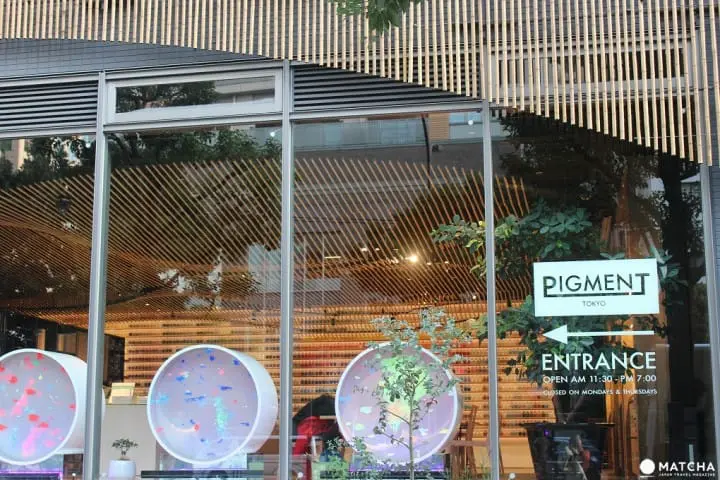
PIGMENT is a traditional art supplies lab that collects rare, high quality materials that incorporate both classical methods and cutting-edge technology. These materials include 4,500 pigments used in dyes and tints and over 200 kinds of ink sticks made over 30 years ago.
You can also see the attentive care placed into how the products are arranged in store. This is a place that is fun even just to visit thanks to the products that are neatly stored and put on display as if it were a museum.
A Photogenic Lab Full of Originality

The interior was designed by Mr. Kuma Kengo and is made in the image of bamboo sudare (*1). This is a building where you can experience Japanese tradition while also within in a state-of-the-art atmosphere.
Care has also been put into the exhibition, with works of artists adorning displays that can be seen from outside. They are changed every three to four months. Exhibitions are also held by employees to match the season in the lab.
*1 Sudare: blind partitions woven and made with bamboo or common reeds. Mainly used in the summer to hang over or set against the outside of a window.

Head and art supplies expert Mr. Iwaizumi
Employee uniforms inspired by Japanese paintings are also a feature of the shop. The uniform takes inspiration from Japanese paintings that were drawn by adding colors onto the back and front of silks. Colors from the front can also be seen through the opposite side drawn with polka dots.
This means that the uniforms are reversible. Definitely please have the employees show their uniform to you if you happen to visit.
Storing and Exhibiting Rare Traditional Materials
Many art supplies are beautifully displayed as if they were part of a piece of artwork in the lab; you can even purchase a product on display that you’re interested in. People from various countries have visited to pick up products for themselves or as souvenirs.
The employees at the shop also work as artists themselves or are specialists that have research these materials. Please try taking a look around the lab while consulting with the staff. They will gladly give you a brief explanation about the typical art materials in the shop.
The 4,500 Pigments Decorating the Entire Wall

The pigments that adorn the entirety of the wall will especially catch your eye. These pigments include not only various colors, but also various types of pigments such as natural mineral pigments made from crushed minerals and crystals or paints made from natural soil.
These pigments are natural colors that are not just used in paintings but are also used for painting cars and adding color to cosmetics.
Paint and Calligraphy Brushes Diverse in Shape and Size
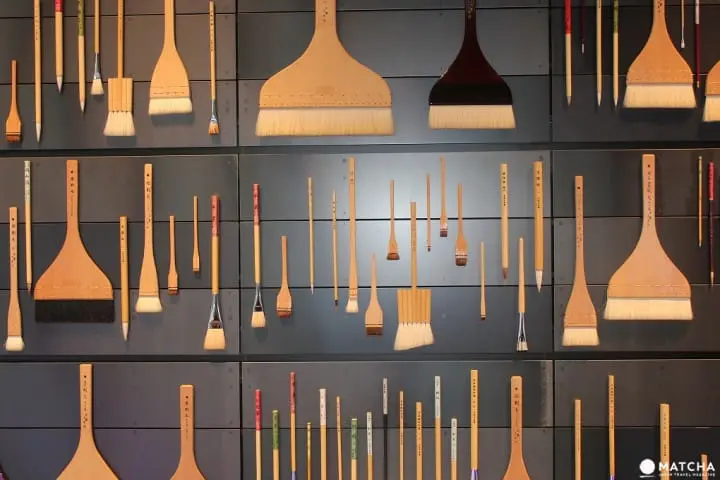
Paintbrushes and calligraphy brushes made with squirrel, weasel, and many other types of hairs are beautifully displayed on the wall. It is a general convention for brushes to be made of only one variety of hair in Western countries, but the brushes in China and Japan are made with a mix of several types of hairs.
Ink Stones Displayed Like a Museum Exhibit

An ink stone is a tool used for grinding ink sticks with water.
You might think that there is no particular relation to the quality when it comes to tools for grinding. However, it is no exaggeration to say that the quality of the ink stone is connected to and has the important role of determining whether or not the true color of the ink stick will come out.
Many Other Important Supplies for Japanese Paintings
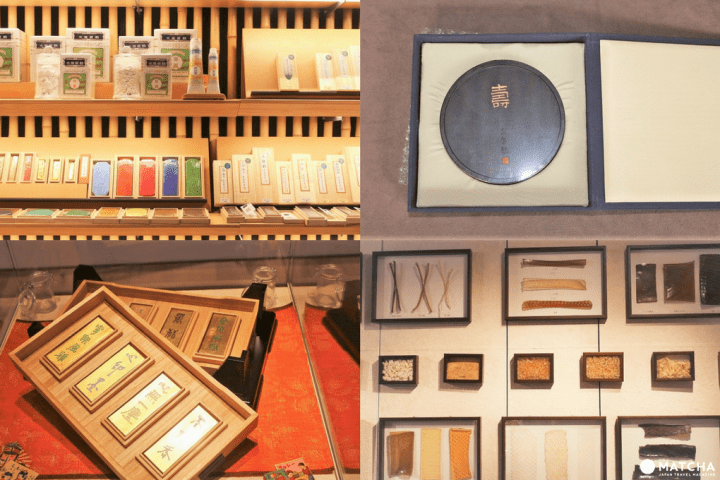
Other supplies such as antique ink sticks made with attentive care to its materials and formula, distemper that is used when your pigments or inks have solidified, and washi papers have also been collected at the lab. All products are chosen by employees as great quality products.
Experience the Depth of Traditional Materials in a Workshop
PIGMENT hosts workshops during the weekends that will give you a valuable experience while being directly taught by employees that have professional knowledge and skills. Up until now, workshops hosted by PIGMENT were also asked to be held at training groups for corporate design departments as well as at diplomatic events.
The subject of the workshop will vary depending on what is being held at the time such as Japanese or oil painting. At the time of this article, we were fortunate to experience creating watercolors for ourselves at a workshop that was easy even for beginners to understand.
Creating Paint with a Selection of Pigments
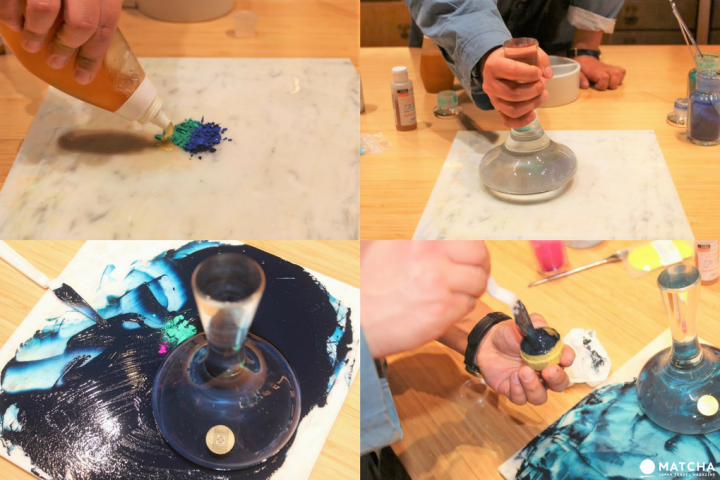
First, imagine the color you want to create and choose the pigments that you will be mixing while consulting with the staff. You will take out pigments, adhesive paste that will help to fixate the color, and honey as a preservative before blending them all together in circular motions.
You will be using pigments made from crystals at this workshop. Crystals have a whiteness that does not exist in any other object; with that white as a base, the hue of the chromatic color you mix together will be even more apparent.
This pigment will feel special because it’s a color that you were able to make just for you using crystals.
We were able to witness the color changing due to the combination of pigments, amount of adhesive, and the way in which the colors were mixed. It is complete once it has become a color that you’re satisfied with.
The time needed for the workshop will change depending on how fastidious you are with your pigment, but our writer completed her color in about one hour. You’ll also be able to bring home the color that you’ve made in a case.
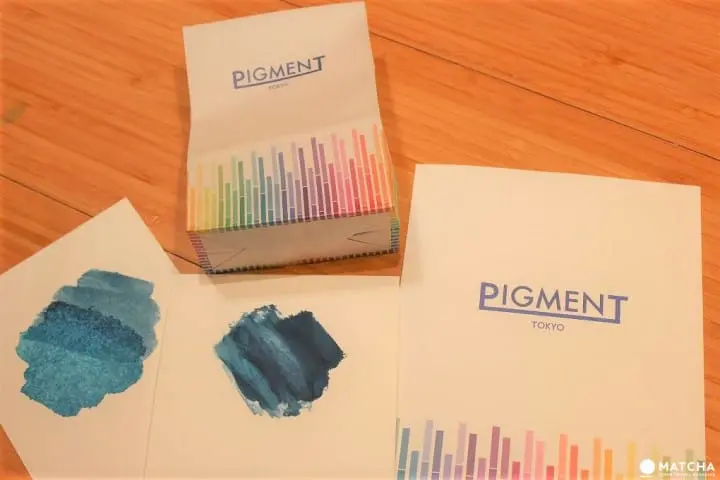
Upon trying to use the color on paper that absorbs water well and paper that doesn’t, we found that the result varied despite being from the same paint.
Through this workshop, even those that have never thought about the ingredients in paints and paper while looking at works of art can experience the depth of the materials used.
It would also be great to use the color that you made yourself in Japan and send a postcard to your home country or perhaps give the paint as a souvenir to art lovers.
How to Participate in a Workshop
The subject and days a workshop will be held are announced a month prior on this page for reservations. It is necessary to purchase a ticket beforehand in the event that you wish to participate in a workshop.
If you wish to attend an English workshop, please choose “Ticket with English Support” and purchase from there on the website.
You can also have a workshop specifically scheduled for you even on days when there is no workshop when you have a party of four or more people. To do so, please contact the shop beforehand.
A Place to Experience the Hearts of Experts
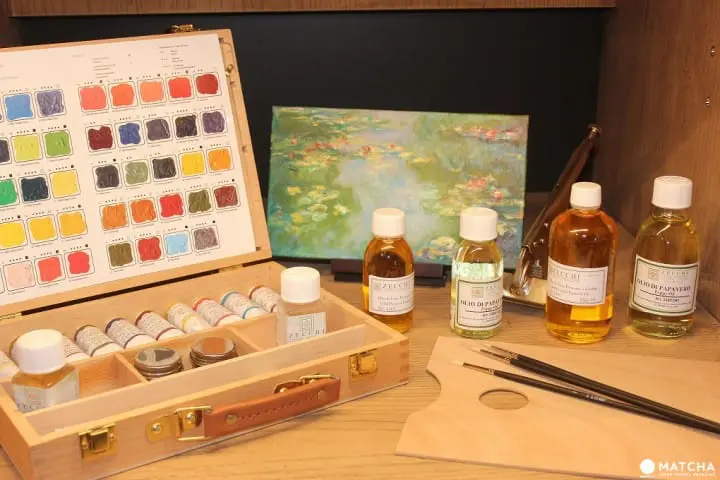
PIGMENT is under a company called Warehouse TERRADA. The company originally preserved and stored highly specialized products such as artworks and wine. Currently, their concept of safekeeping has further deepened to not be limited to tangible objects as they now handle the preservation and inheritance of intangible cultures and traditions.
Among them is a focus on art supplies that are fundamental to art but have become difficult to carry on the tradition, which is what gave birth to PIGMENT. We were able to experience those very thoughts and feelings throughout the lab.
The Rinkai Line and Tokyo Monorail at Tennozo Isle Station is the nearest station to the lab. Another one of its charms is the fact that it is easy to include into your travel itinerary thanks to its great access from Haneda Airport in ten to 20 minutes by the Tokyo Monorail.
Please try paying a visit to the lab to experience valuable traditional materials and the hearts of art specialists.
Hotels near PIGMENT TOKYO
You May Also Like
Bumpodo – Inside The Living History Of Art And Stationery!
Odaiba Travel Guide – 15 Must Do Things In Toyo’s Best Entertainment Spot!
Made in cooperation with Warehouse TERRADA
旅行と食が大好き。日本の良いところをいっぱい知ってもらえますように…❤︎



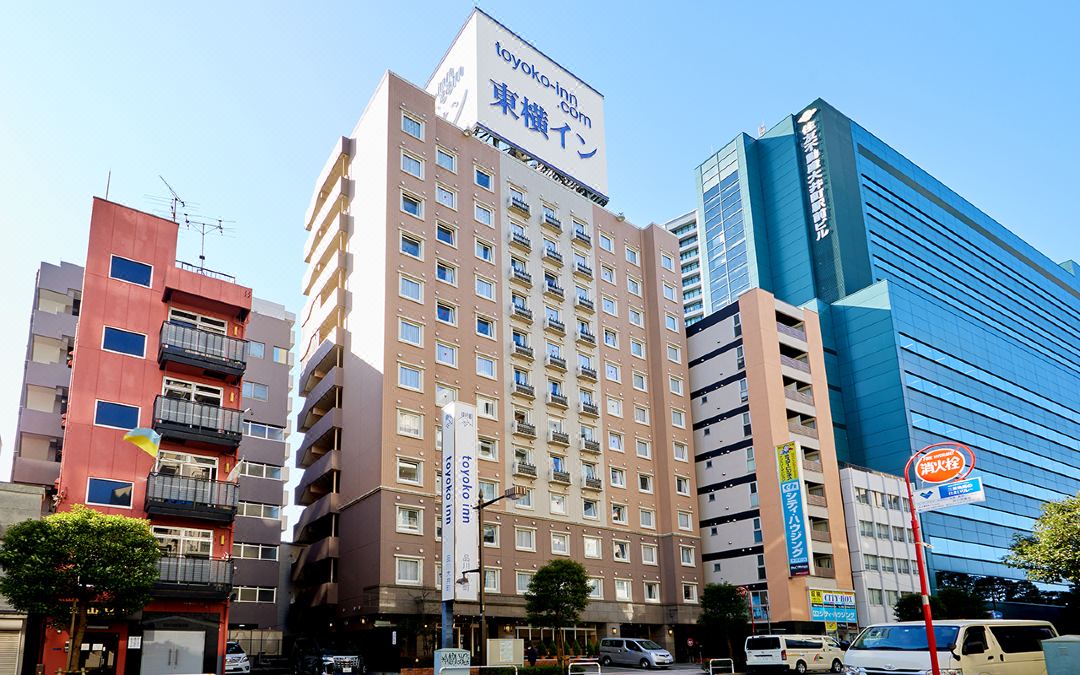

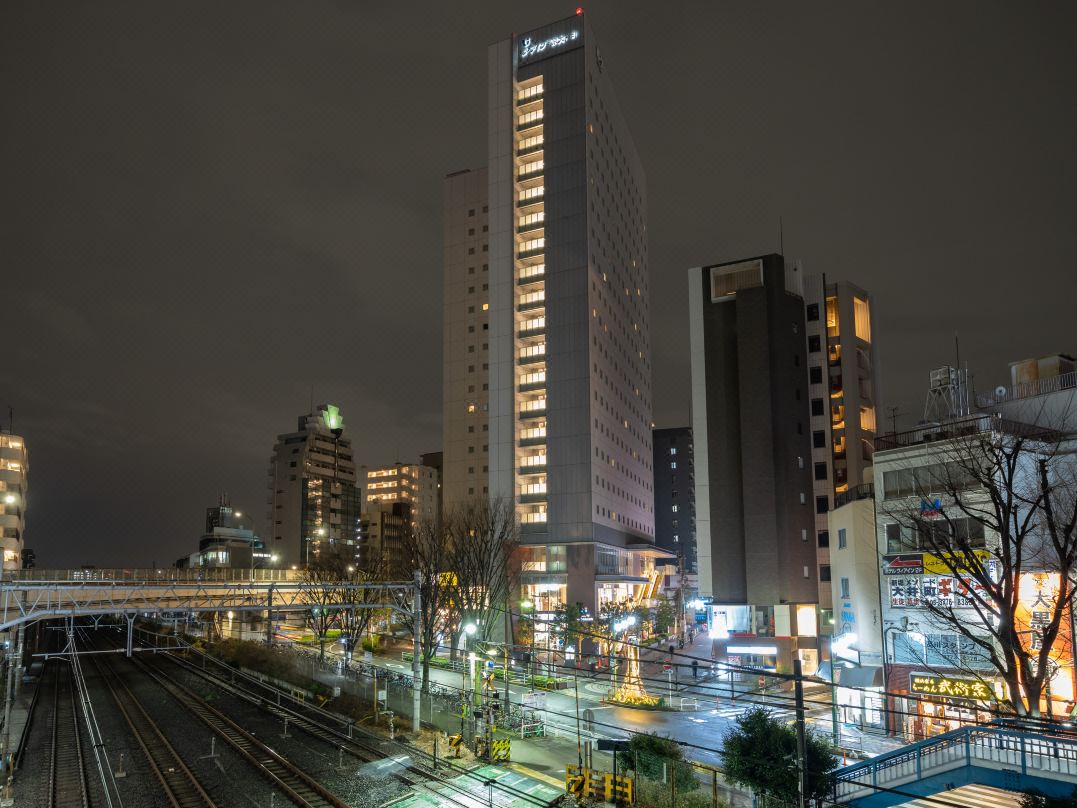







































![[2026] Top 5 Strawberry Picking Spots in Tokushima, Naruto| Farms and Access Guide for January to May](https://resources.matcha-jp.com/resize/720x2000/2025/03/06-227165.webp)



